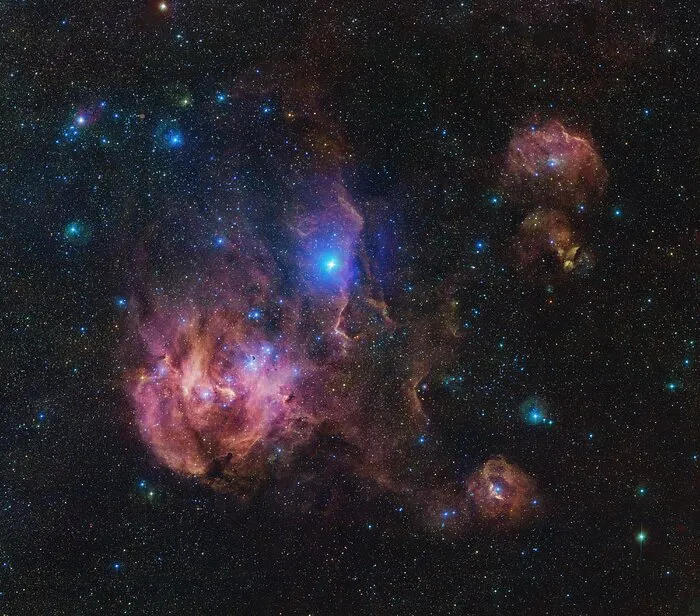A new image from the VLT Survey Telescope shows a beautiful region called the Running Chicken Nebula, which makes for a striking festive scene. Located 6,500 light-years away, this region is full of bright young stars that sculpt the clouds of dust and gas around them to form complex structures.

This particular structure is thought to look like a chicken, as the European Southern Observatory explains: “The Running Chicken Nebula actually comprises several regions, all of which we can see in this vast image that spans an area in the sky of about 25 full Moons. The brightest region within the nebula is called IC 2948, where some people see the chicken’s head and others its rear end. The wispy pastel contours are ethereal plumes of gas and dust.
“Towards the center of the image, marked by the bright, vertical, almost pillar-like, structure, is IC 2944. The brightest twinkle in this particular region is Lambda Centauri, a star visible to the naked eye that is much closer to us than the nebula itself.”
The image is formed from a mosaic of many small images that have been stitched together, and were taken by a telescope located in the Paranal Observatory in Chile. The VLT Survey Telescope includes a camera instrument called OmegaCAM, which works in the visible light wavelength and observes the southern sky from its position in the Southern Hemisphere.
The images that make up the mosaic were taken using various different filters, each of which lets in a particular wavelength of light, allowing scientists to collect detailed information on distant targets like this nebula.
The nebula is being studied as part of a project to look at the life cycle of stars. When stars are born from clouds of dust and gas, they often give off large amounts of radiation when they are young. This radiation carves shapes into the dust and gas, forming shapes and illuminating the gas and making it glow.



